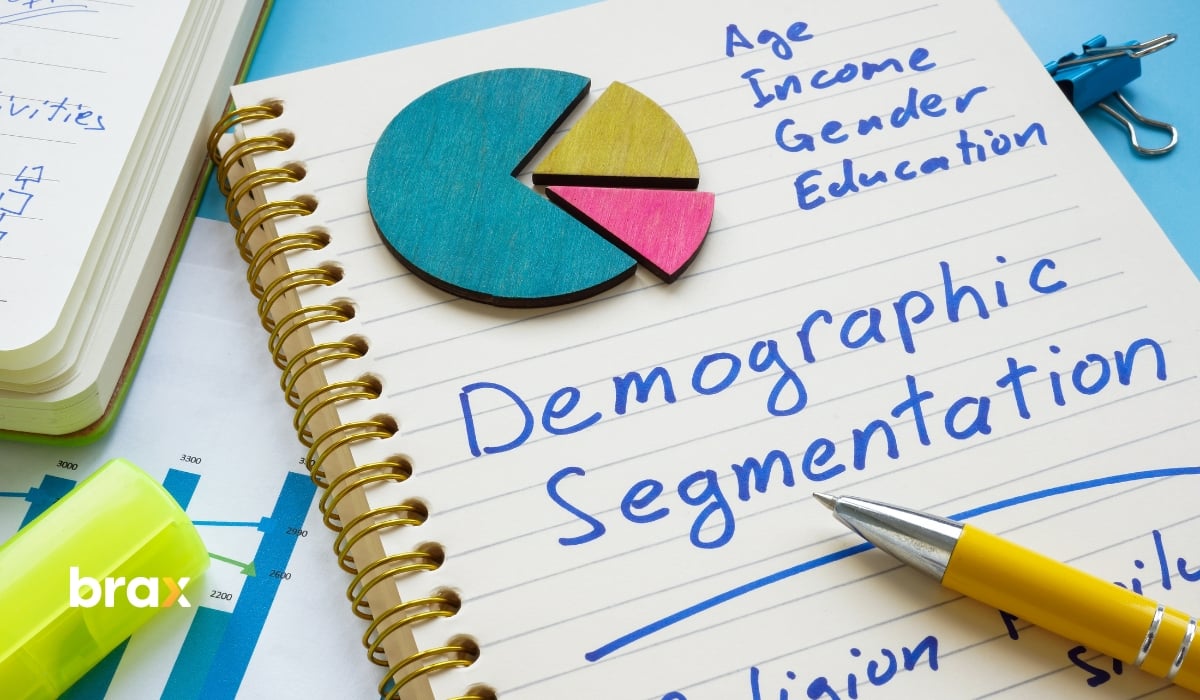In a world inundated with advertisements, the need for marketers to capture and retain the attention of their target audiences has never been more paramount.
If you're leveraging native ads to promote your business, congratulations—you're already one step ahead by integrating your messaging seamlessly with user experiences.
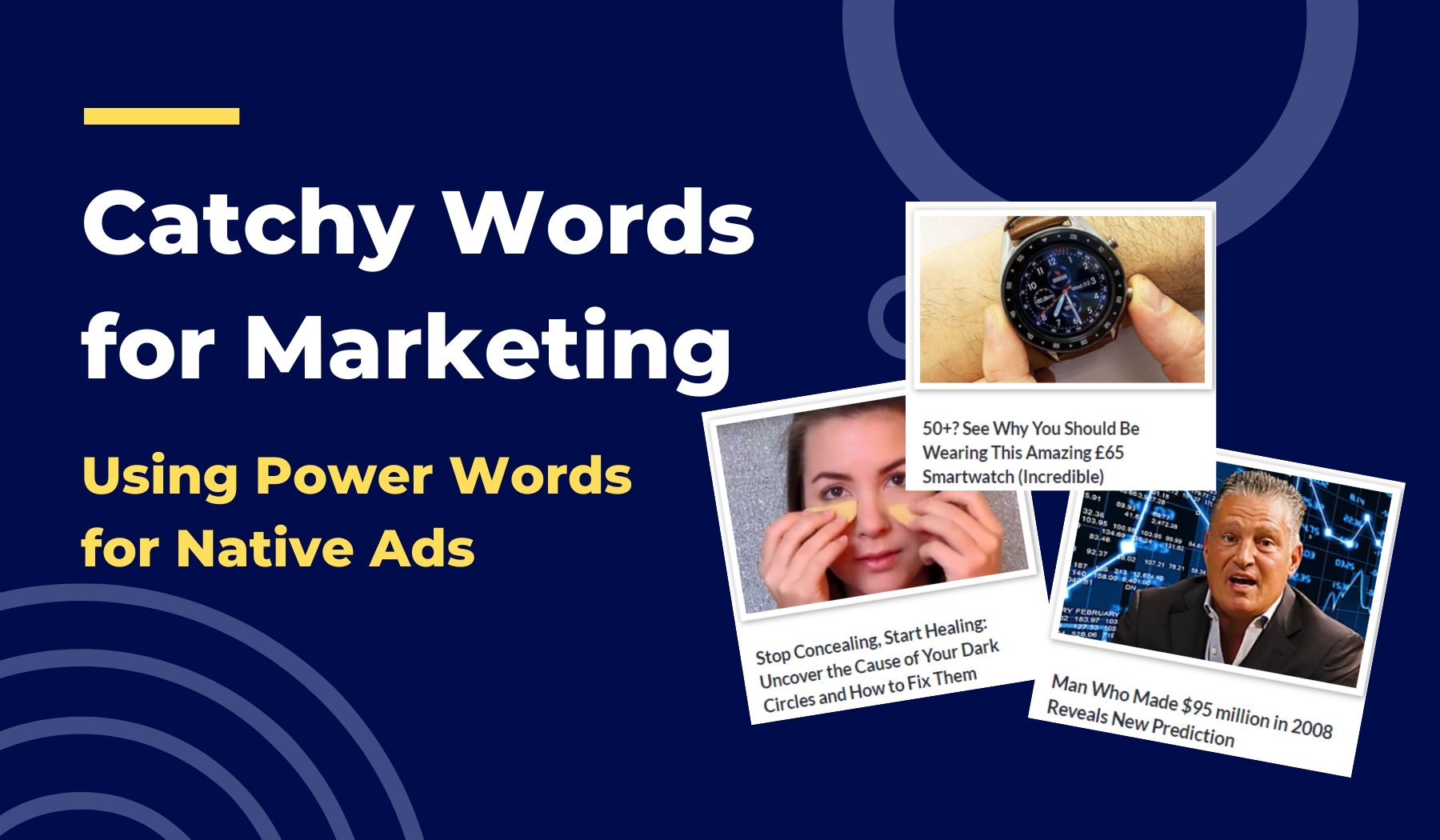
However, even the most strategic native advertising campaigns can hit a ceiling, leading to stagnation in click-through and conversion rates. This is where the magic of power words comes into play.
Like a master key designed to unlock your audience's psyche, power words can evoke emotions and drive action, turning passive readers into active participants and, ultimately, loyal customers.
So let's delve into the captivating world of catchy marketing words, and learn how to use them to reignite the spark in your native advertising efforts.
The Impact of Power Words in Native Advertising
In the game of native advertising, the words you choose can make or break the connection with your target audience. Deploy the right language, and you'll find yourself conversing with your audience like you're old friends hanging out at your favorite coffee shop.
Utilize power words strategically, and you create an irresistible hook that resonates on a personal level. It's about striking the perfect balance between being relatable and authoritative, ensuring every sentence drives the reader towards a single goal—conversion.
Words have the power to persuade, conjure vivid images, and tap into the spectrum of human emotions, compelling readers to pause, click, and engage.
It's not just about selling; it's about storytelling in a way that feels organic, crafting messages that are not only heard but felt.
So, choose wisely, because the language you use is the difference between blending in and standing out.
The Psychological Pull of Power Words and Consumer Behavior
Unpacking the psychology behind power words is like a deep dive into what makes us tick as humans.
Empowered by emotion and motivated by connection, we're hardwired to respond to certain linguistic stimuli more than others. As savvy marketers, we not only need to understand this but also have to be adept at applying it to our communication strategies.
Power words are emotional triggers—they're the heartbeats in a story, the applause in a performance.
They're the words that make you go 'Wow, that's exactly how I feel' or 'Yes, that's what I need!'

Every time you use a term like revolutionary, exclusive, or sensational, you're kindling an emotional response. What happens next in the mind of the consumer is fascinating.
They don't just read—they feel.
They don't just see a product—they visualize a lifestyle.
It's this emotional hijack, a term used to denote the subconscious pull of these words, that can transform a casual browser into a buyer.
It's not manipulative; it's resonant. When we understand the values and desires of our audience, crafting messages with power words becomes synonymous with crafting experiences.
And in today's market, experiences are what sell, not just products.
Emotionally charged words cut through the noise and echo in the memory long after the screen is switched off.
When you select power words that align with your brand's core values and your audience's aspirations, you catalyze a reaction. It's about starting conversations and nurturing relationships, not just driving conversions.
In the long run, leveraging this psychological understanding is what will make your brand a leader—not just another voice in the cacophony of the marketplace.
Understanding Your Demographic: The First Step to Tailored Communication
Identifying your target audience is the critical first step in any marketing strategy. Knowing who you’re talking to informs every other decision you make, from the words you choose to the platforms you use to reach them.
When you understand your demographic's age, gender, occupation, interests, and pain points, you can craft a vocabulary that resonates deeply and personally with them.
Crafting Age-Appropriate Messaging
Dial into your audience's age group to better connect with them.
Different age groups communicate in vastly different ways.
The language that energizes a millennial might differ from the terminology that would resonate with a retiree.
You must learn to recognize the slang, jargon, and level of formality that your audience prefers. Using terms that reflect your understanding of their world proves you're not another faceless brand but a relevant and thoughtful communicator.
So it’s important to learn more about marketing to Gen Z, Millennials, and Baby Boomers.
Personalizing the Conversation
- Speak their language.
Just as age influences communication style, so do gender and personal interests. Men and women often have differing priorities and interests, which should be considered when crafting your message.
Additionally, identifying common interests shared by your audience members can help you include references that will catch their attention and speak to their preferences directly.
- Write Your Message in Their Voice.
Analyze the language your audience uses to increase the relatability of your messaging. It would be best to use an active tone of voice over a passive voice.
Active voice not only energizes your content but also mirrors how people speak and think, which is why ads in the active voice often perform better.
It creates a natural and familiar flow, inviting them into a conversation rather than a sales pitch.
- Study Patterns for Personalized Engagement.
Immerse yourself in the forums, social media platforms, and review sites your demographic frequents.
Identify the patterns in their language, and infuse your communication with these linguistic nuances. Doing so shows that you're not only listening but that you're part of their tribe.

- Measure and Adapt for Continuous Improvement.
Track how different segments of your audience respond to variations in your brand's language. Use these insights to refine your approach continuously.
By speaking their language, you'll increase response rates, engagement, and ultimately, loyalty to your brand.
Employing these active strategies ensures that your brand's voice isn't just broadcasting messages but is engaging in a dynamic dialogue with your audience.
Using Sympathetic Solutions
- Solve their problems.
Understanding your demographic's occupation and daily challenges allows you to empathize with their situation and offer solutions. Use language that acknowledges these struggles and illustrates how your product or service will alleviate their specific pain points.
Your choice of words should translate your empathy into a convincing narrative that your product or service is tailor-made for them.
Tailoring your vocabulary to fit your demographic ensures that your message isn't just heard—it's understood and felt.
Using the right words can foster a sense of community and trust between you and your audience, making your message more than a pitch—it becomes a conversation, a solution, and a stepping-stone to a relationship with lasting value.
How to Craft Compelling Native Ads Headlines with Power Words
In an era where consumers are bombarded with endless streams of content, standing out is paramount. A well-crafted headline can make the difference between a message that fades into the digital backdrop and one that captivates and converts.
This section delves into the art of creating compelling native ads headlines using power words to seize attention and spark interest.
Let's explore how the strategic use of language can turn a simple headline into a powerful tool for engagement.
Utilize Action-Oriented Verbs
Action-oriented verbs give your headline a sense of urgency and momentum that can spur the reader into engagement. A dynamic verb frontloads your headline, injecting energy and encouraging the audience to keep reading.
Power Verbs to Electrify Your Headlines
- Achieve - conveys the accomplishment of goals or desires
- Boost - implies an increase or improvement in performance
- Challenge - invokes a sense of daring and competition
- Uncover - suggests revealing highly sought-after information
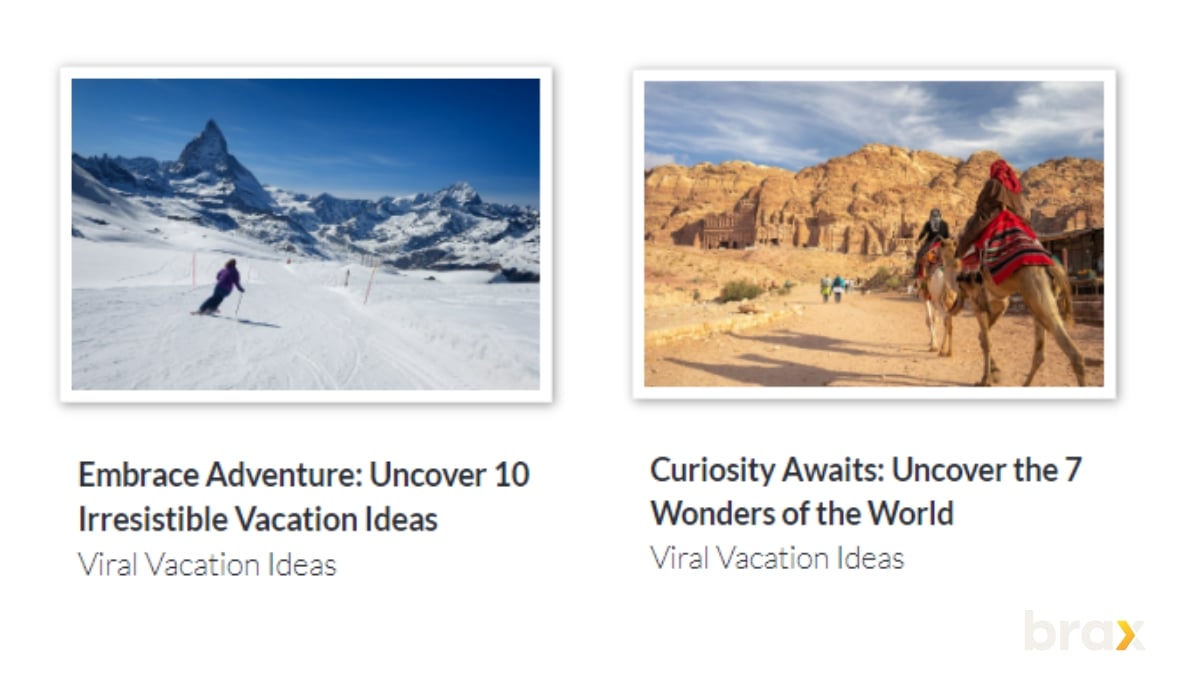
- Discover - promotes the allure of finding something new
- Ignite - sparks thoughts of initiating something exciting or passionate
- Transform - indicates a significant change or conversion
- Lead - represents taking charge or being at the forefront
- Revolutionize - highlights a radical or groundbreaking change
- Maximize - expresses the attainment of the greatest possible amount or degree
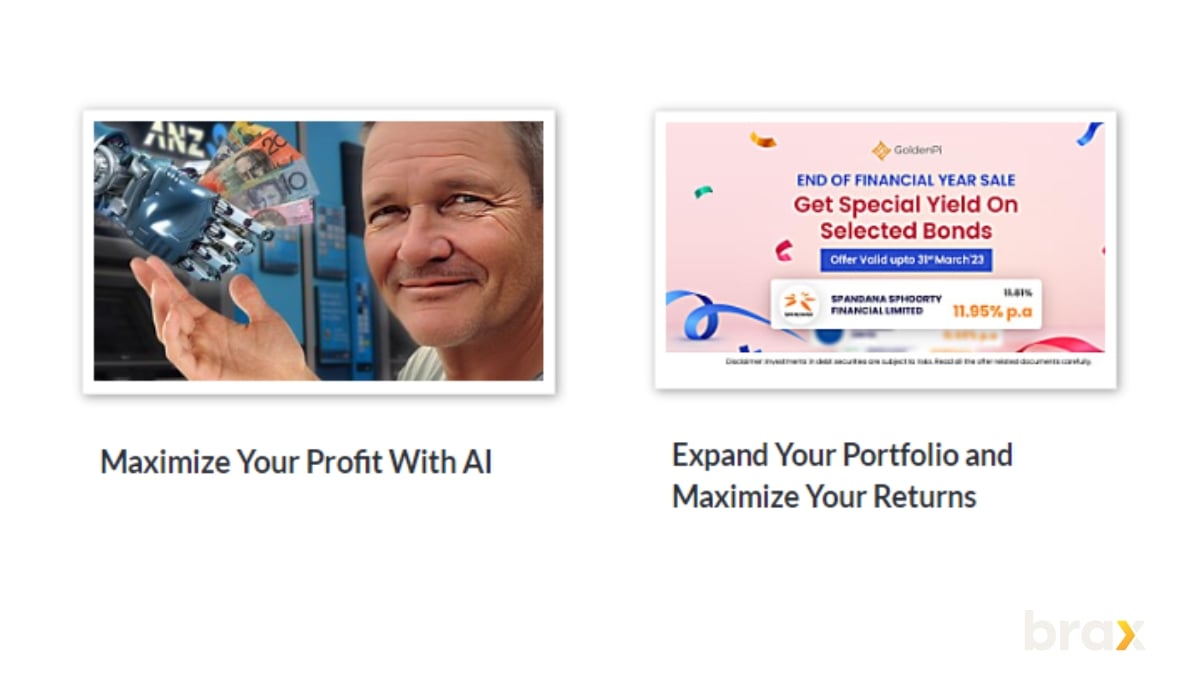
Incorporate Numbers and Lists
Numbers and lists convey a clear and organized promise of value to the reader. They set precise expectations for what the audience will learn or gain from reading further.
Titles like “7 Secrets to...” or “Top 10 Tips for...” suggest that the content is accessible, digestible, and worth the time investment.

Ask Compelling Questions
Questions in headlines are a compelling way to pique curiosity and engage the reader's own thoughts or feelings.
Well-crafted questions can instantly connect with the reader’s pain points, desires, or curiosities, prompting them to seek out the answer within your content.
Words Used for Compelling Questions in Headlines
How - Offers a teaser for a step-by-step guide or explanation.
Example: "How to Triple Your Productivity with One Simple Hack?"
What - Introduces topics that aim to inform or reveal insights.
Example: "What Secrets Do Successful Entrepreneurs Know That You Don't?"
Where - Prompts the reader to seek guidance or knowledge about places or scenarios.
Example: "Where Will Technological Advancements Take Us in the Next Decade?"
Why - Initiates thought-provoking inquiries and seeks explanations.
Example: "Why Your Morning Routine Isn't Working?"

When - Suggests immediacy or timing, often associated with trends or events.
Example: "When Is the Right Time to Invest in Cryptocurrency?"
Who - Appeals to the reader's interest in people or expertise.
Example: "Who Are the Visionaries Leading the Charge in Renewable Energy?"
Can - Implies possibility or capability, often used to empower the reader.
Example: "Can Simple Lifestyle Changes Lead to a Longer Life?"
Is/Are - Sets up a juxtaposition or a direct statement to engage the reader.
Example: "Is This the Diet That Will Revolutionize Your Health?"
Should - Suggests advice or recommendations, encouraging the reader to consider an action.
Example: "Should You Start Your Own Business in 2023?"
Will - Implies certainty or a prediction about the future.
Example: "Will AI Replace Your Job in the Next Five Years?"
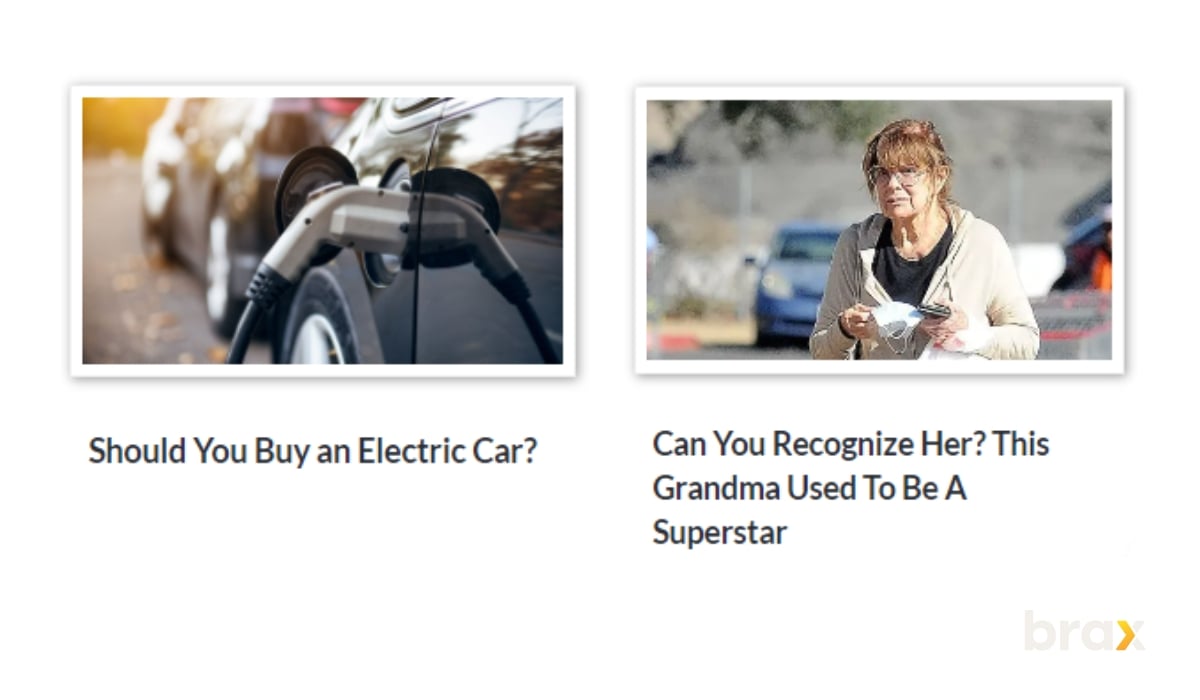
Leverage Emotional Adjectives
Adjectives loaded with emotion can resonate with the reader on a personal level. By describing the content with words that evoke strong feelings, you can make your headline more compelling.
Adjectives such as "effortless," "incredible," or "heart-wrenching" can draw readers by appealing to their emotional side.
Emotional Adjectives to Amplify Your Ad Headlines
- Breathtaking
- Exhilarating
- Devastating
- Mesmerizing
- Groundbreaking
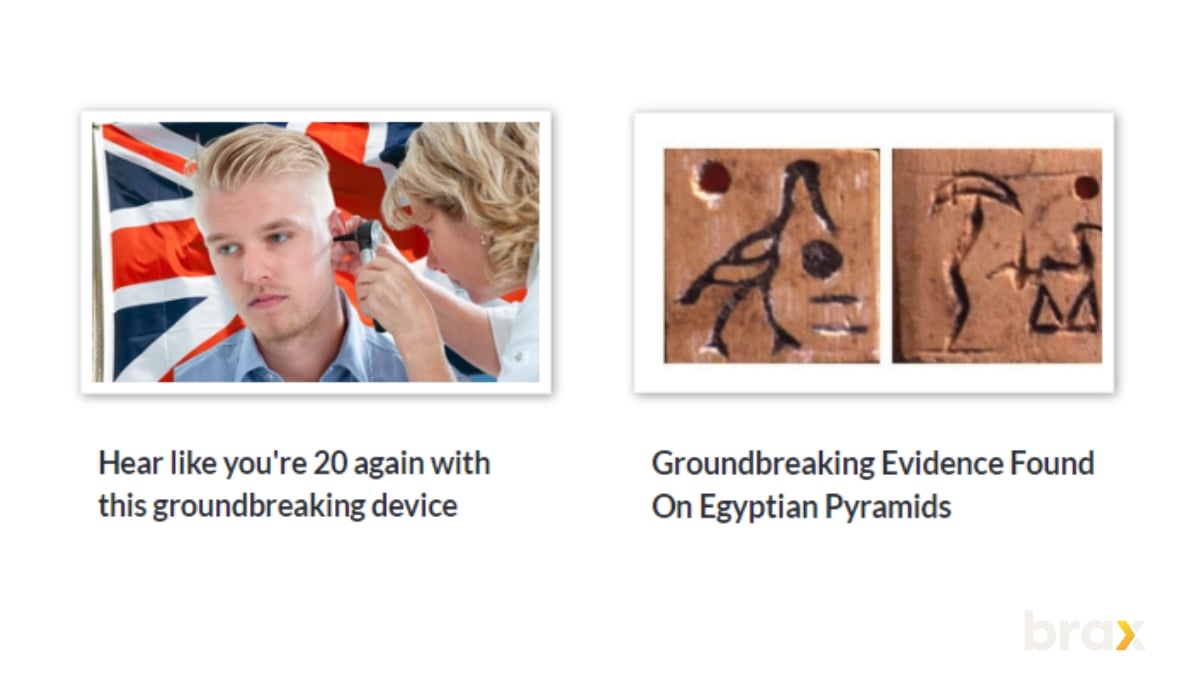
- Painstaking
- Heartwarming
- Jaw-dropping
- Mind-blowing
- Provocative
- Spellbinding
- Empowering
- Liberating
- Soul-stirring
- Revolutionary
- Epic
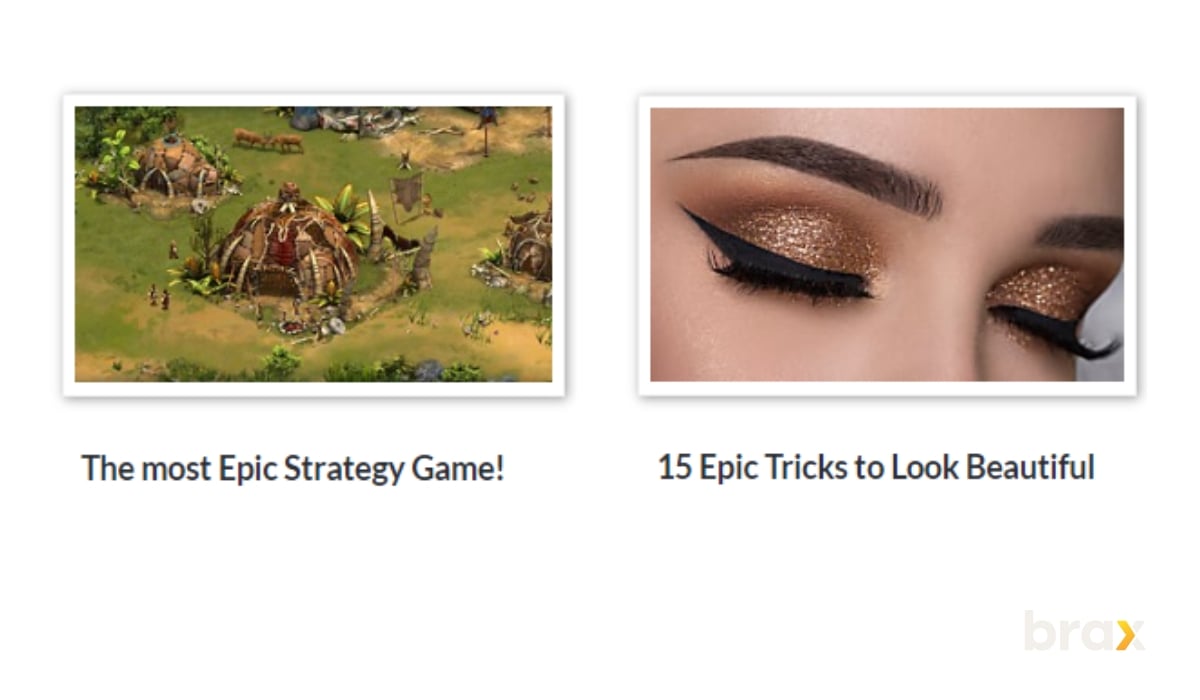
- Tear-jerking
- Heart-stopping
- Overwhelming
- Fearless
- Exquisite
- Passionate
- Priceless
- Spectacular
- Sensational
- Unforgettable
- Majestic
- Phenomenal
- Glorious
- Incredible
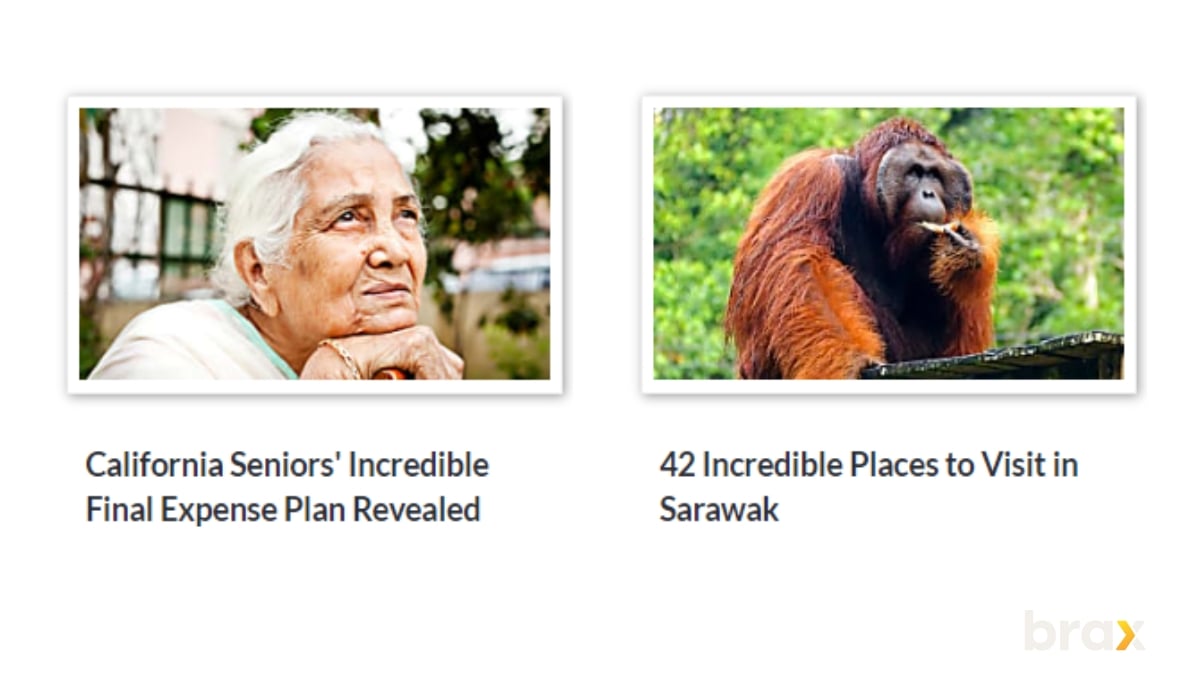
- Intimate
- Radical
- Vibrant
- Remarkable
- Thrilling
- Astonishing
- Unbelievable
- Fascinating
- Empathetic
- Legendary
Capitalize on Trending Topics
Aligning your headline with trending topics can increase its relevance and timeliness, making it more attractive to an audience seeking the latest information.
Leveraging current events, trending hashtags, or popular culture references can make your content feel contemporary and urgent.
It’s not just the word “latest” that says something is trending. Words that indicate a recommended content talks about something trending are current words, or those that haven’t been as frequently used before as today.
Let’s outline some examples.
Power Words for Trending Topics in Native Ads
- [Year] - Add the current year to imply the latest trend.
- Innovative - Suggests cutting-edge technology or ideas that are changing the industry.
- Viral - Denotes content or trends that are rapidly spreading and gaining popularity online.
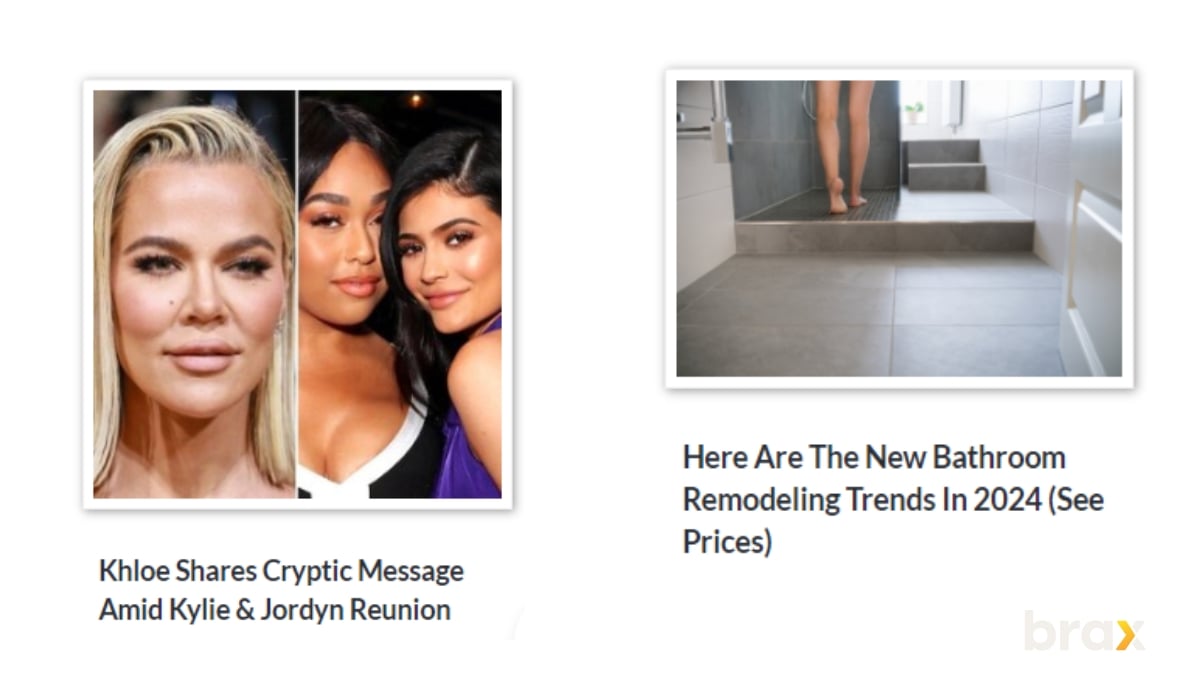
- Sustainable - Appeals to environmentally conscious consumers interested in green initiatives.
- Disruptive - Indicates a product or idea that is shaking up traditional practices.
- Insider - Implies privileged information or a perspective that is not widely known.
- Cryptic - Evokes curiosity about mysterious or complex topics, such as cryptocurrency.
- Smart - Refers to intelligent technology or making decisions that reflect cleverness and savvy.
- Wellness - Connects with audiences interested in health, self-care, and holistic lifestyles.
- Hacks - Offers clever tips or shortcuts that simplify life's challenges.
- Exclusive - Suggests content or offers that are available to a select few.
- Organic - Attracts consumers looking for natural and unprocessed options.
- Influencer - Ties into the clout of social media personalities who sway public opinion.
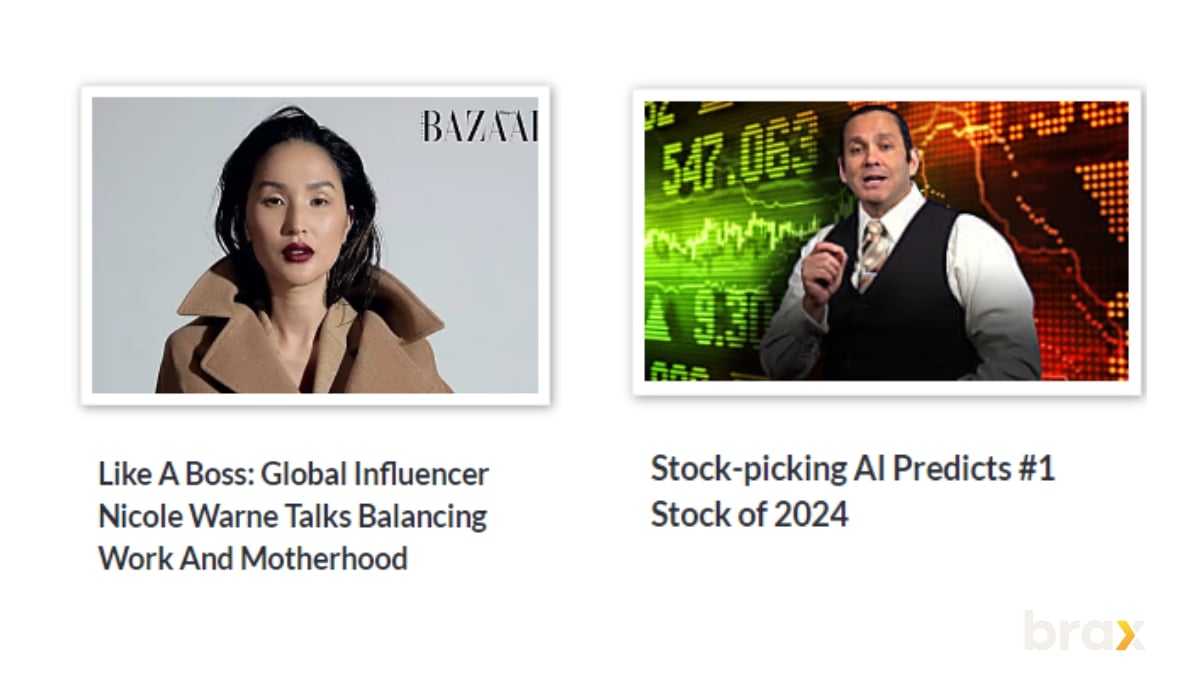
- Millennial - Targets the interests and habits of the millennial generation.
- Gig - Relates to the gig economy and the lifestyle of freelancing or short-term jobs.
- Blockchain - Connects with the tech-savvy audience interested in the latest in secure transactions.
- Superfoods - Appeals to those interested in nutritional powerhouses that boost health.
- AI-Driven - Implies the use of artificial intelligence in products and services.
- Zen - Represents mindfulness, tranquility, and a stress-free lifestyle.
- Detox - Appeals to those looking to cleanse or purify their body or environment.
- Futuristic - Appeals to audiences interested in technology and innovation shaping the future.
- Game-Changing - Suggests something that will fundamentally alter the current landscape.
- Minimalist - Connects with the trend of simplicity and decluttering in lifestyle and design.
- Plant-Based - Appeals to vegans, vegetarians, and those reducing meat consumption for health or ethical reasons.
- Binge-Worthy - Implicates content that is compelling enough to watch or consume in large quantities in a single sitting.
- Immunity - Taps into the widespread focus on health and preventing illness (which has not stopped trending ever since the COVID pandemic).
Using Industry-Specific Terminology to Increase Relevance
Utilizing industry-specific terminology can significantly heighten the relevance and resonance of your headlines and content within a targeted market segment. Jargon that might seem opaque to outsiders often speaks directly to industry insiders, signaling in-depth understanding and expertise.
For example, tech enthusiasts appreciate terms like "machine learning" and "big data," while professionals in finance respond to "blockchain" and "fintech."
Incorporating such specialized language can attract a more niche, yet highly engaged audience, fostering a sense of community around shared knowledge and interests.
Industry-Specific Terminology for Enhanced Ad Relevance
- Augmented Reality (AR) - Resonates with a tech-savvy crowd interested in interactive and immersive experiences.
- Programmatic Advertising - Attracts marketers looking for automated and efficient ad buying processes.
- Growth Hacking - Appeals to startups and businesses focused on rapid growth and scalability.
- Conversion Rate Optimization (CRO) - Targets digital marketers keen on improving website performance and sales.
- Machine Learning - Engages an audience interested in AI and its applications in data analysis and prediction.
- Internet of Things (IoT) - Piques interest from consumers and businesses invested in connected devices and smart technology.
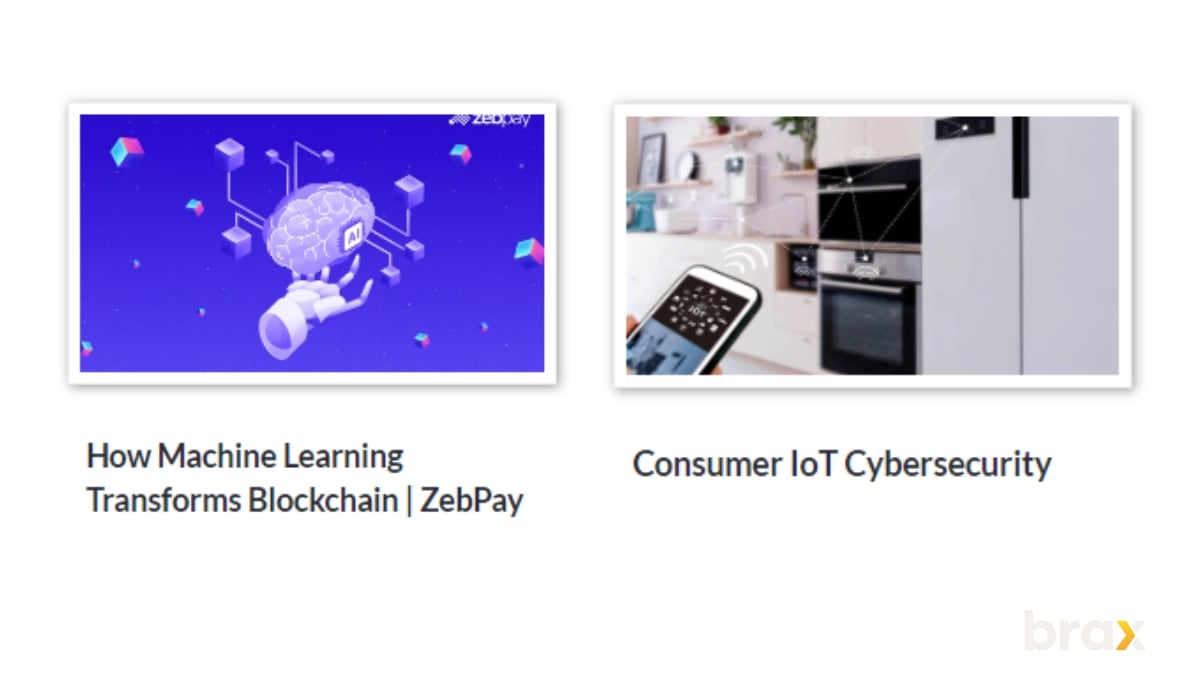
- User Experience (UX) - Draws in designers and companies that prioritize customer satisfaction and interface design.
- Content Management System (CMS) - Attracts web developers and content creators needing tools for website creation and maintenance.
- FinTech - Appeals to finance professionals and consumers looking for innovative financial technologies.
- Personalized Medicine - Catches the attention of healthcare providers and patients interested in customized treatments.
- Big Data - Interests companies and professionals dealing with large data sets and analytics.
- DevOps - Resonates with software developers and IT professionals focused on combining development and operations.
- Edge Computing - Appeals to those interested in decentralized computing processes and technologies.
- Supply Chain Optimization - Targets professionals in logistics and operations management seeking efficiency.
- Remote Work Solutions - Attracts businesses and individuals adapting to or offering work-from-home setups.
- Renewable Energy - Engages environmentally conscious individuals and industries focusing on sustainable resources.
- E-commerce Solutions - Appeals to retailers and entrepreneurs involved in online sales platforms.
- Agile Methodology - Resonates with project managers and teams that adopt flexible and iterative approaches.
- Cybersecurity - Attracts IT professionals and businesses concerned with protecting data and networks.
- Quantum Computing - Captures the imagination of those interested in the cutting edge of computing power and potential.
- Predictive Analytics - Appeals to decision-makers using data to forecast trends and behaviors.
However, make sure you only use these terms when advertising on relevant websites and when hyper-targeting audiences. If you don’t target properly, you might have a very low CTR, which can, in turn, cost you more.
Maintaining Authenticity and Trust with Persuasive Language
In the pursuit of captivating audiences, the importance of maintaining authenticity cannot be overstated. When we use persuasive words and emotionally charged language, it is crucial that our messages stay grounded in truth and integrity.
This alignment builds trust with your audience—trust that, once broken, is challenging to restore.
- Be Genuine in Your Promises.
Overhyping with words like "groundbreaking" or "revolutionary" can set unrealistic expectations if your product or service doesn't deliver.
It's important to use persuasive language that accurately represents the value you're offering. This fosters a sense of reliability and respect.
- Consistency is Key.
Your brand's voice should remain consistent across all platforms and pieces of content. When your message is consistent, persuasive language feels more genuine and becomes more effective.
Consistency reinforces brand identity and helps establish an authentic connection with your audience.
By combining persuasive words with an authentic message, you not only draw attention to your content but also build a loyal following based on trust and credibility. Your audience will appreciate the honesty and be more inclined to engage with your message and brand.
Using Calls to Action That Convert
The use of power words in native advertising headlines is just one piece of the puzzle.
To truly energize your audience and move them through the sales funnel, it is imperative to expand this strategy into your calls to action (CTAs).
A strong, compelling CTA, equipped with catchy and persuasive language, is what transforms passive readers into active participants.
It's not just what you offer, but how you frame the invitation to engage that can make all the difference in the effectiveness of your marketing campaigns.
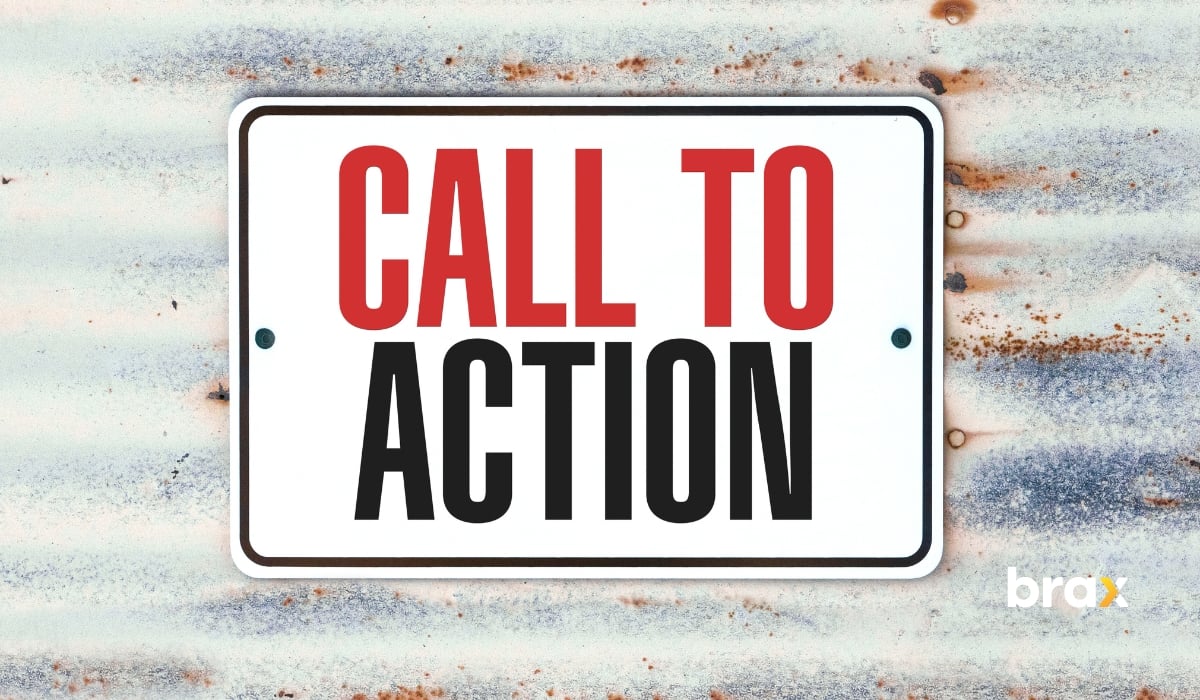
Crafting Effective CTAs with Action-Oriented Language on Offer Pages
When creating CTAs for your offer pages, whether they be for subscriptions or product sales, imbuing your language with action-oriented phrases is crucial. These phrases should not only compel the reader to act, but also clearly indicate what action is expected of them.
Consider the difference between the passive "This book is available here," and the active "Grab Your Copy Today!"
The latter not only tells readers what to do, but it also conveys a sense of urgency and benefit.
- Create a Sense of Urgency
Phrases like "Limited Time Offer" or "Act Now" convey that the opportunity won't last forever, encouraging immediate action.
This tactic taps into the psychological principle of scarcity, making the offer more valuable in the eyes of the consumer.
- Be Clear and Concise
Your CTAs should be straightforward and to the point. Users are more likely to take action if they know exactly what's expected. "Subscribe Now to Get Exclusive Content" leaves no room for doubt about the benefits of taking action.
- Use First-Person Language
Changing the perspective to first person, such as "Start My Free Trial" instead of "Start Your Free Trial," can increase click-through rates by creating a more personal connection with the user.
- Highlight the Benefits
Users are driven by what they stand to gain. A CTA like "Get Instant Access to Expert Tips" emphasizes the immediate benefit of following through with the action.
- Ensure Visibility
Your CTA should be one of the most prominent elements on your page, often through the use of contrasting colors, large fonts, and strategic placement. It should catch the user's eye and lead them towards the conversion goal.
By implementing these strategies, your CTAs will become powerful elements of your offer pages, driving higher engagement, and ultimately, greater conversion rates.
For more information on how to craft good CTAs, refer to our guide here.
Constant Evolution of Language in Marketing
As language evolves and consumer behavior shifts, savvy marketers must remain agile, constantly adapting their use of powerful marketing words within native ads to capture attention and convert views into actions. It's a landscape that rewards creativity and punishes stagnation.
By staying updated with linguistic trends and understanding the emotional undercurrents that drive consumer engagement, you can craft native advertising that not only resonates with audiences but also respects the ebb and flow of marketing efficacy.
Keep learning, testing, and refining your approach to native ad copy. Watch closely as words rise in popularity and others fall away. The right phrase today might be a misfire tomorrow—such is the nature of our rapidly changing digital wordscape.
Success in native advertising isn't just about what you say; it's about how and when you say it. Embrace this constant evolution, and you will find that the power of your words can indeed turn browsers into buyers, and readers into advocates.
And if you need help with crafting the right ad text and even your native ads campaigns as a whole, don’t hesitate to reach out to experts, like us! Book a demo of Brax today and boost your native advertising campaigns with ease.
